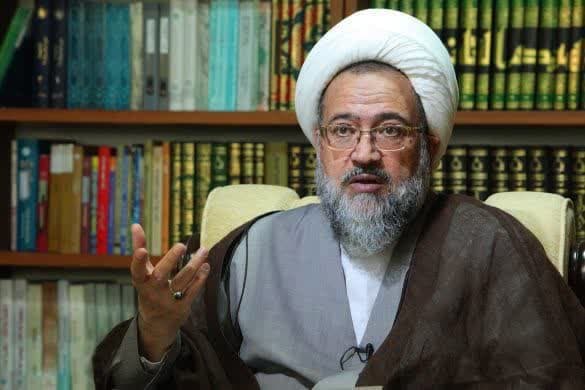Introduction: At a time when music, as one of the most influential branches of art in Iranian society, is of significant importance, the need for a renewed and scholarly jurisprudential analysis of this phenomenon is increasingly evident. The Department of Cyberspace, Art, and Media of the Islamic Propagation Office of Khorasan, in collaboration with the Research Group on Jurisprudence of Culture, Art, and Media at the Institute for Contemporary Jurisprudential Studies, as a pioneering institution in fostering dialogue between religion and art, seeks to update the subject analysis and jurisprudential approaches related to music through a series of specialized sessions conducted with a scientific and disciplined methodology.
The 210th scientific session of the Department of Cyberspace, Art, and Media of the Islamic Propagation Office of Khorasan, in collaboration with the aforementioned research group, was held on Sunday, 29 Tir 1404 (July 20, 2025), at 10:00 AM. The theme of this specialized session was “New Elements in the Subject Analysis of Music and a Novel Approach to the Jurisprudence of Music,” presented by Ayatollah Abulqasim Alidoust, a professor of advanced jurisprudence and legal principles at the Qom Seminary. The session was moderated by Mohammad Javad Estadi, the head of the Department of Cyberspace, Art, and Media of the Islamic Propagation Office of Khorasan.
At the outset, Mr. Estadi welcomed Ayatollah Alidoust and highlighted the historical significance and role of the Islamic Propagation Office, emphasizing its continuous efforts to leverage the capacities of seminaries to establish an effective connection between the emerging needs of society and religious knowledge.
He further stated, “One of the critical needs today is the integration of jurisprudence and art, an area that, unfortunately, has received insufficient attention thus far.”
Ayatollah Alidoust began his remarks by praising and thanking God and expressing gratitude to the organizers of the session. Referring to the complexity of the topic of music in Islamic jurisprudence, he emphasized that the approach of these sessions is to open new horizons while adhering to the discipline of jurisprudential principles. He clarified that the objective of this series of sessions is to present innovative and scholarly discussions that lead to a deeper and more practical understanding of music within Islamic jurisprudence, rather than merely reiterating previous opinions.
In explaining the concept of subject analysis in jurisprudence, Ayatollah Alidoust stated, “Subject analysis in jurisprudence refers to identifying the subject matter upon which a legal ruling is applied, which must be distinguished from the external manifestations of music.” He elaborated on the distinction between ghina (vocal music) and music (instrumental music) and emphasized that jurisprudence must address new elements and topics in music that were not previously considered. These include the role of music as a tool for misguidance or guidance, the concept of “averting the greater harm by the lesser” in media and musical productions, and its political and social impacts.
Ayatollah Alidoust stressed that these discussions must remain innovative while staying within the boundaries of jurisprudential and religious principles to avoid any deviation.
He further provided a brief and documented overview of the history of the jurisprudence of music, emphasizing two fundamental conditions for novel approaches: “horizon-opening” and “jurisprudential discipline.” He welcomed scholarly critiques and innovative theorizing.
Ayatollah Alidoust then discussed the views of two prominent Shia jurists, Muhaqqiq Sabzevari and Sheikh Ansari, regarding the topic of music and ghina. From Sabzevari’s perspective, playing musical instruments is not inherently forbidden; rather, it becomes impermissible due to accompanying unlawful conditions such as mixed gatherings of men and women, lack of hijab, or environments of frivolity. In contrast, Sheikh Ansari attributed the prohibition of music to its association with frivolity, futility, and triviality, asserting that beautiful and dignified sounds, if not accompanied by such elements, cannot be deemed forbidden.
Addressing the concept of ghina (vocal music), Ayatollah Alidoust examined its etymology, related narrations, and Quranic verses, explaining the consensus among jurists on the prohibition of ghina but noting that this prohibition is “general” and may allow for exceptions. He referenced Quranic verses, including verse 29 of Surah Luqman regarding “idle tales” (lahw al-hadith), and suggested that a more precise examination, aligned with the content, intent, and impact of the sound, could facilitate a renewed jurisprudential interpretation of this matter.
In concluding the session, Ayatollah Alidoust underscored the necessity of continued research and specialized sessions. He announced upcoming sessions in Qom focusing on the jurisprudential policy-making of music and its foundations from the perspective of the Supreme Leader. Expressing gratitude for the support of the Islamic Propagation Office of Khorasan and the Institute for Contemporary Jurisprudential Studies, he expressed hope that this series of sessions would pave the way for new scholarly and jurisprudential advancements in the realm of Islamic art and music.
It is noteworthy that the Islamic Propagation Office of Khorasan has planned eight specialized sessions on music for the year 1404 (2025–2026). The objective of these programs is to conduct a scholarly and jurisprudential examination of music as an art form with a rich historical background and a pivotal role in contemporary Iranian culture, promising the development of innovative and practical approaches in the jurisprudence of art and media, particularly music.

